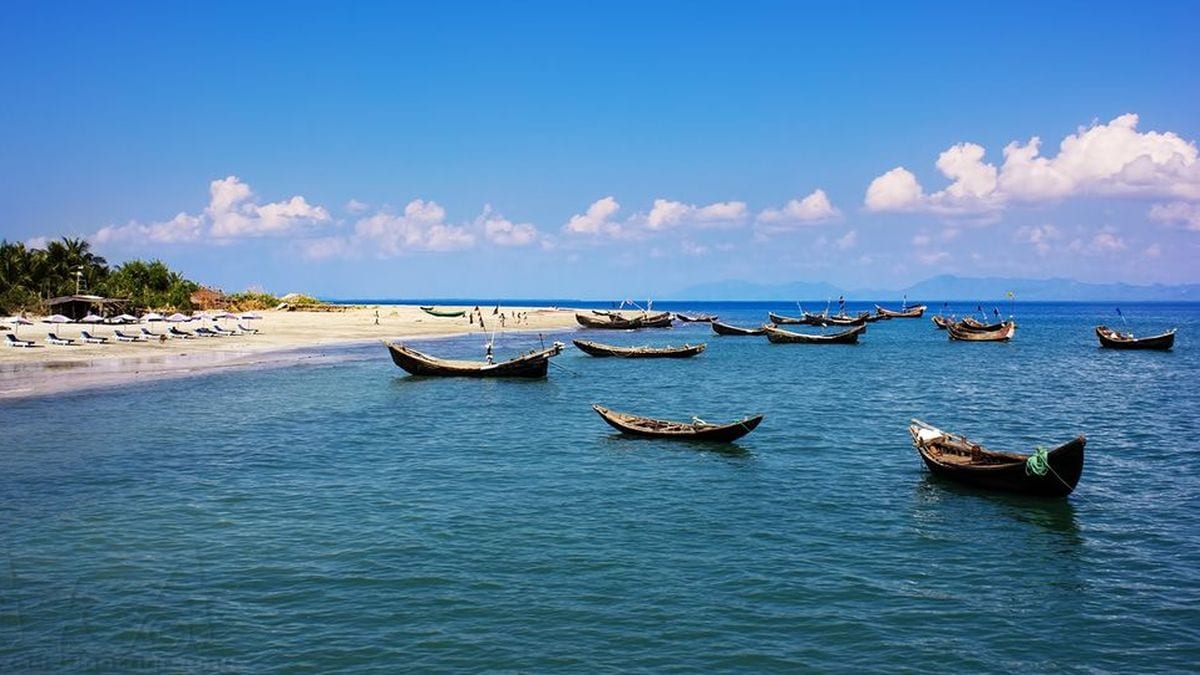The political turmoil in Bangladesh continues to deepen. Four days after Bangladesh interim government’s chief Muhammad Yunus expressed his desire to resign, now comes another headache in the form of Sheikh Hasina.
The ousted leader accused the Nobel laureate of “selling the nation to the United States” and alleged that Yunus had taken control of the country with the backing of extremist groups.
Hasina even invoked the memory of her father, Sheikh Mujibur Rahman, the founding leader of Bangladesh, claiming he was assassinated for refusing to cede St Martin’s Island to the US.
This is the second time that this small island located in the northeastern region of the Bay of Bengal has been mentioned amid the Bangladesh political crisis — earlier, a newspaper had carried a report claiming that Hasina had said that could have continued to remain in power if she had given Bangladesh’s “St Martin’s Island and Bay of Bengal to America”.
But what do we know of this island and what is its geopolitical significance?
Hasina’s latest attack against Yunus
On Sunday (May 25),
former Bangladesh Prime Minister Sheikh Hasina launched a fierce attack
on interim government chief Muhammad Yunus, accusing him of “selling off” the country to the United States and seizing power with the help of militants.
In a Facebook post, Hasina invoked her father,
Sheikh Mujibur Rahman
, and said he lost his life because he refused to surrender St Martin’s Island to the United States. She accused Yunus of doing exactly what her family stood against. “When America wanted St Martin’s Island, my father did not agree. He had to give his life. And that was my destiny. Because I never had the thought of selling the country to stay in power,” Hasina wrote.
“But what a misfortune it is today. Such a person came to power, a person who is absolutely loved by the people of the whole country, a person who is loved by the world, and what happened to that person today when he came to power?”
Hasina further claimed Yunus was running the government with the help of banned militant outfits. “He has seized power with the help of terrorists… even those who are banned in various international arenas, from whom we protected the people of Bangladesh,” she said. “Now prisons are empty. They released everyone. Now Bangladesh is the reign of those militants.”
About St Martin’s Island
The mention of
St Martin’s Island
by Hasina quickly got people asking one question — what is this place?
Located in the northeastern part of the Bay of Bengal, St Martin’s Island a small coral island approximately nine kilometres south of the tip of Bangladesh’s southernmost peninsula, Cox’s Bazar-Teknaf, near Myanmar. It is Bangladesh’s sole coral island.
It boasts of a population of just 3,800 people and is a prominent tourist attraction with thousands of tourists travelling there every day.
Historically, St Martin’s was once part of the Teknaf peninsula, but gradually got submerged into the sea. Records show that when it resurfaced, the Arab merchants were the first to settle there, initially calling it “Jazira” (meaning “the island” or “the peninsula”) and later changed it to “Narikel Jinjira” or “Coconut Island”.
In 1900, the British annexed the land, making it a part of British India and named it after a Christian priest called Saint Martin. However, there are reports that the island has been named after the then Deputy Commissioner of Chittagong, Mr Martin.
After partition of British India in 1947, it became part of Pakistan and subsequently, a part of independent Bangladesh after the 1971 Liberation War.
Strategic importance of St Martin’s Island
But is this island of any significance? The simple and short answer is yes. Owing to its location, it is the perfect position for surveillance of the Bay of Bengal, especially at a time when China has been trying to flex its muscles in that region.
Experts note that a military presence on the island would strengthen their capabilities in the region. Many have noted that as China expands its naval presence in the Indian Ocean, other powers, including the United States and India, are keen to monitor and counterbalance this influence. Control over St Martin’s Island would provide any nation with a significant advantage in maintaining surveillance over the Bay of Bengal and the broader Indian Ocean region.
Moreover, St Martin’s Island lies near vital sea lanes that are essential for global trade, it is rich in natural resources, and it serves as a gateway to the Indian Ocean, making it a key area for naval operations and strategic dominance.
Bone of contention in Bangladeshi politics
There have long been rumours of the US’ interest in St Martin’s Island. In 1971, _The Organiser r_eported that Sheikh Mujibur Rahman fended off pressure from the US to establish a base at the island.
There are also allegations that the Bangladesh Nationalist Party (BNP), led by former Prime Minister Khaleda Zia, had considered selling the island to the United States for the establishment of a military base in exchange for electoral support.
And days after Hasina fled Bangladesh in August last year, a letter began circulating claiming to be from the former Bangladeshi PM in which she suggested that her ouster was the result of pressure from the United States (US) regarding St Martin’s Island in the Bay of Bengal.
“I could have remained in power if I had left St Martin’s and the Bay of Bengal to America,” the letter reportedly said. However, Hasina’s son, Sajeeb Wazed, clarified that his mother had not made any statements before fleeing Dhaka on August 5 amid violent protests that led to hundreds of deaths.
With inputs from agencies




